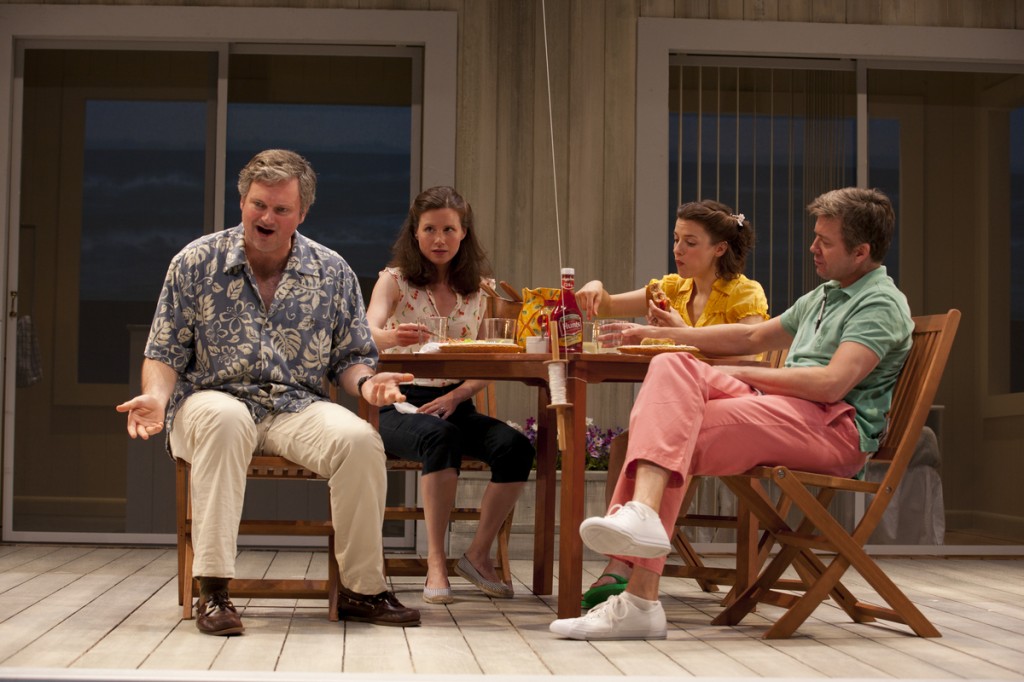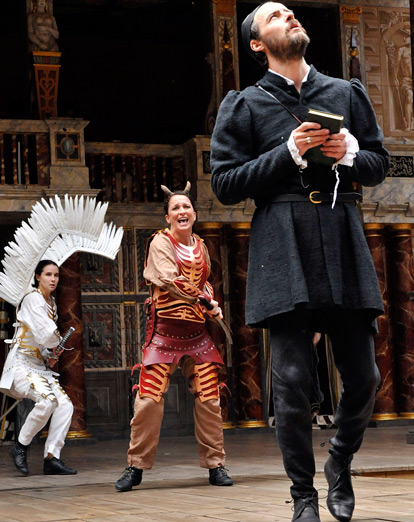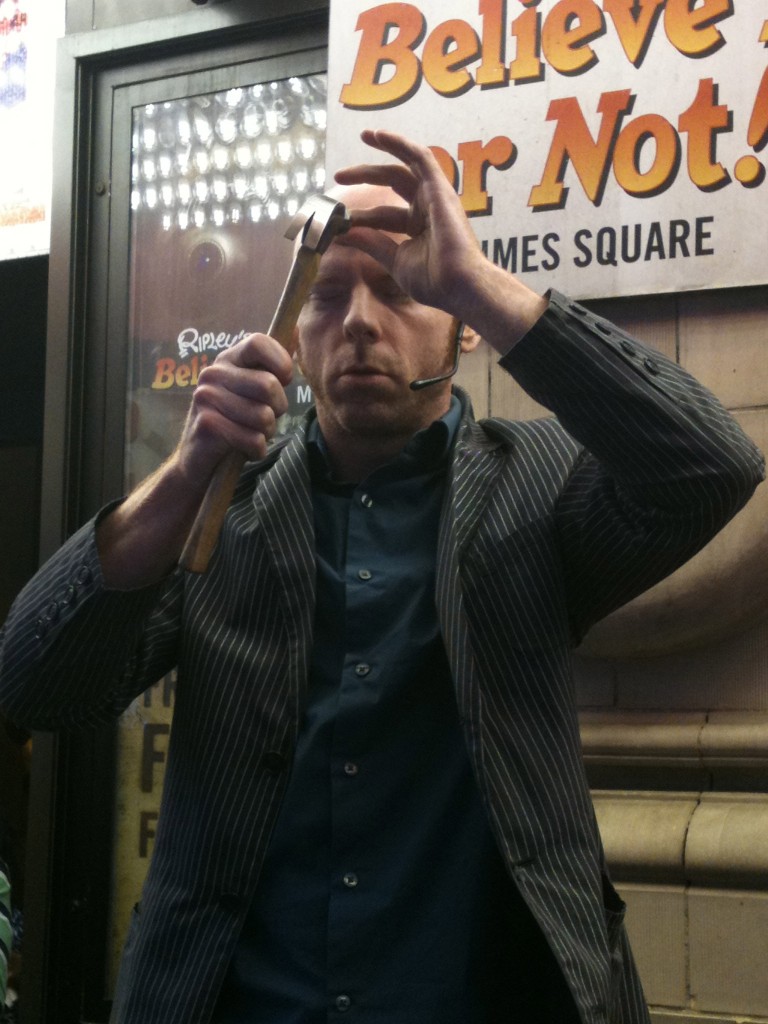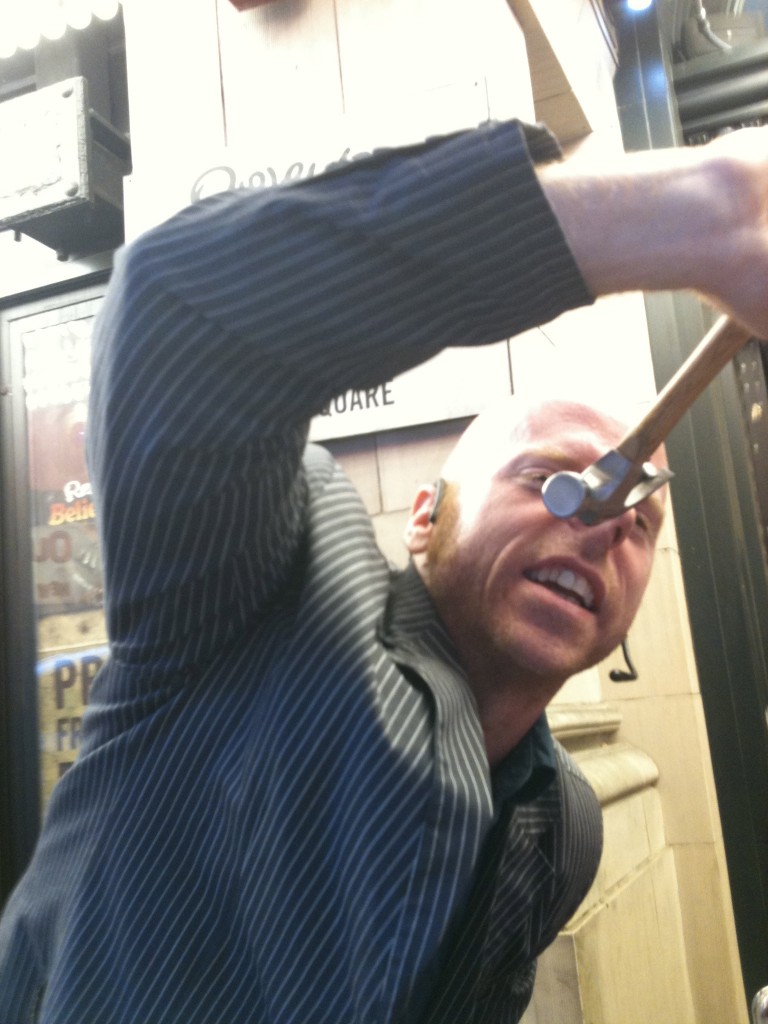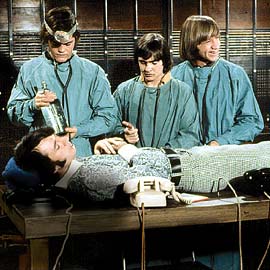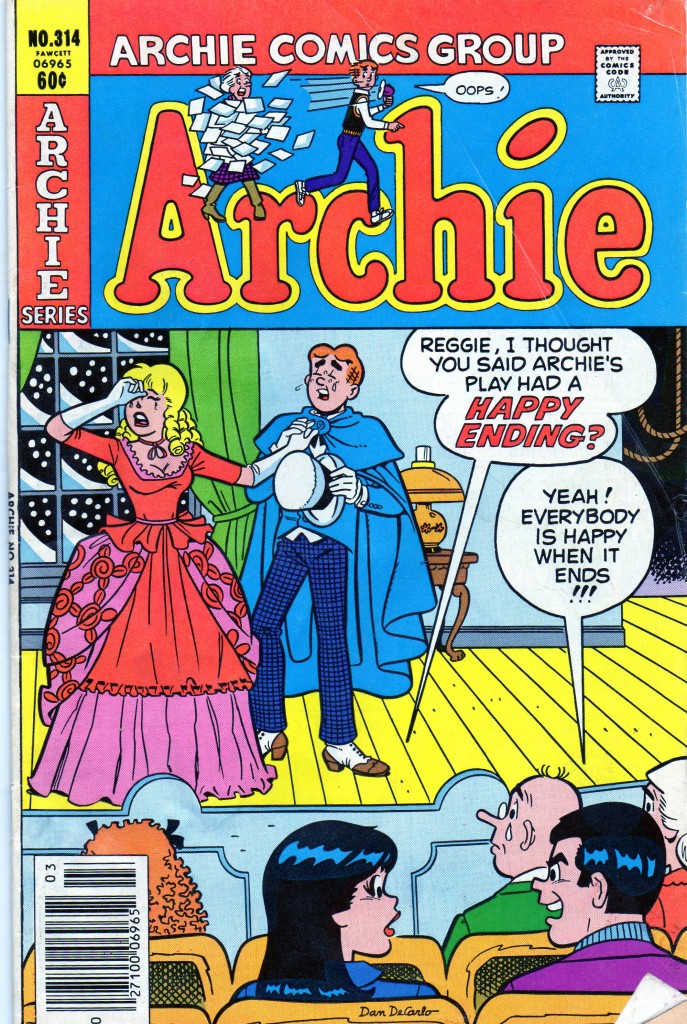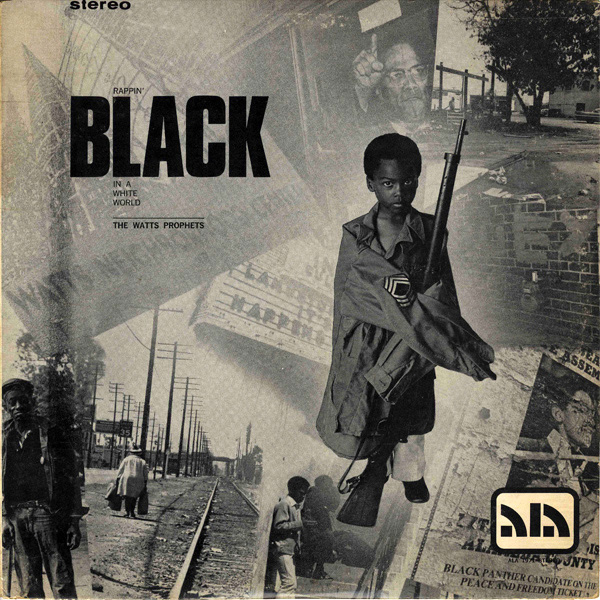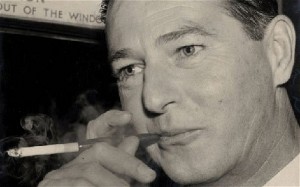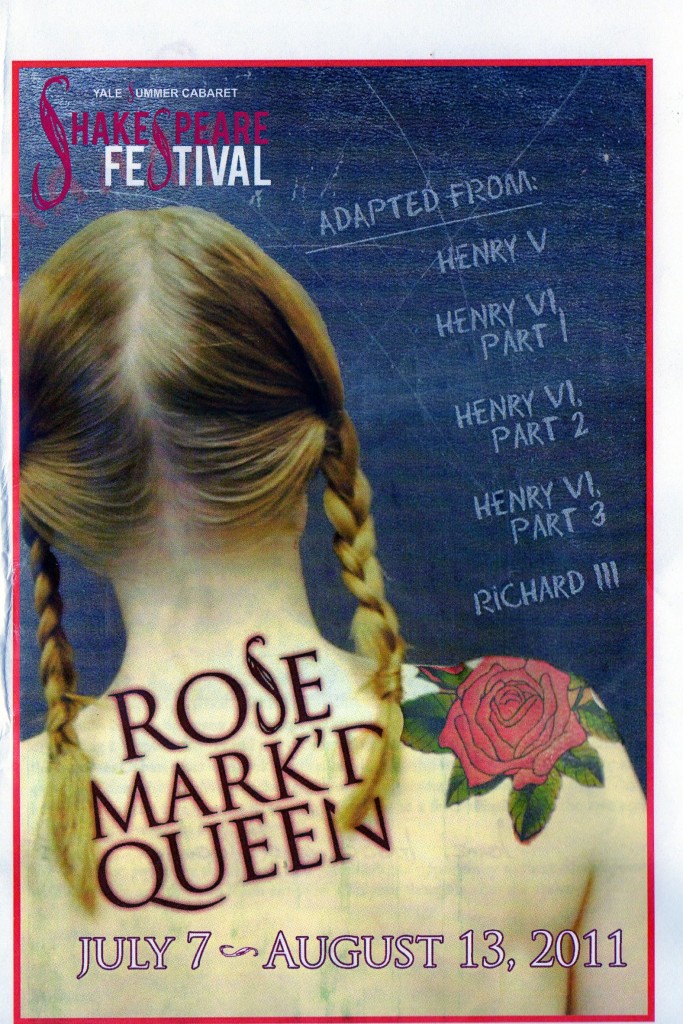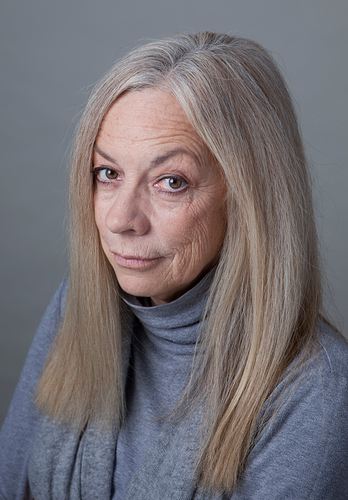
A RARE PHOTO OF NONIE NEWTON BREEN NOT BEING A NUN. LATE NITE CATECHISM 2 PLAYS AT WHARF STAGE II JULY 13-AUGUST 21.
Nonie Newton Breen has carved out a sweet little career dolling up in a habit and berating theatergoers as the nameless “Sister,” the indomitable conductor of Late Nite Catechism classes.
She’s Sistered it up in New Haven in both summer and winter, for weeks at a stretch, four or five times all told.
Late Nite Catechism is most deeply associated with its creator, Maripat Donovan, who has co-written and debuted every show in the series, and who established the show as a franchise. It’s Donovan’s image which appears in the Late Nite Catechism posters and promo materials, including the posters and videos announcing Sister’s return to Long Wharf Stage II this week.
The Long Wharf’s hosted three separate Sisters since first introducing Late Nite Catechism to New Haven as part of the theater’s first summer season seven years ago. None of the three were Maripat Donovan. Breen is the one who endured,
In a phone interview a few weeks back, Breen describes herself as one of the “hardcore travelers” who tour LNC year-round. “There are four or five of us who do that. There are upwards of 15 girls doing the show at Christmastime,” when theatergoers behave just like churchgoers and attend more diligently. They are all allowed to put their own stamp on the role. “Some are jollier, some are tougher—there are no guidelines or handbook,” Breen says.
Late Nite Catechism gigs can range from weeks-long bookings at proper theaters like the Long Wharf to one-nighters in concert halls to business functions and private parties. Breen spent three and a half months last year playing Sister in Sacramento. Boredom never sets in because, thanks to Sister’s constant interaction with audience members, “it’s always different. Every single night.”
There are also five different shows in the Late Nite Catechism series. “I do all five,” says Breen. “They just opened the the fifth one, Sister’s Easter Catechism: Will My Bunny Go to Heaven?,” and I was the first to go out with that.” (After Maripat Donovan performed the premiere, of course.)
Long Wharf’s had the original Late Nite Catechism several times, as well as the third in the series, Till Death Do Us Part (about Catholic marriage rites) and the fourth, Sister’s Christmas Catechism. This summer the theater backtracks to bring in Late Nite Catechism 2: Sister Strikes Again for its first time in the city. “It’s about how to get to Heaven,” Breen explains, “with multi-media, a list of sins with a lot of new ones for today, prizes…”
Breen acts as both educator and interlocutor, juggling faithful Catholic factoids with impatient and impertinent discussions with audience members, most of whom have been called out for questionable behavior in class.
“The trick with this character is staying in the moment. The shows are scripted but you have to keep an open mind. You’re always filing away people’s names and their behaviors, to illustrate what you’re talking about.” It’s a skill Breen developed from being a part of the famed Second City improv troupe in the 1970s. A current Second City touring ensemble happened to play Long Wharf just last month, but methods have changed. This group was doing mostly “classic” sketches, set material from the vast Second City script archives. “In my generation,” Breen recalls, “you got suggestions from the audience, then ran back and had about ten minutes to create a sketch. Now they pre-write a lot of their stuff. But it’s still a good training ground. It’s like getting your master’s degree.”
Breen’s recently penned her own one-woman show, which she calls “a complete departure” from her Sister persona. Departure is right: I’d Rather Walk concerns “the oldest stewardess on the oldest plane in the sky.” The show was given a “test run” at the Lyric Theater in Stuart, Florida, where—as at the Long Wharf—Breen has performed regularly in the Late Nite Catechism shows.
She hopes to develop I’d Rather Walk into its own national touring gig, but for now Breen continues to don Sister’s habits for as much as 11 months a year. Connecticut remains one of her favorite stops. “New Haven’s right up there.” Other fave venues include “Stuart, Florida, and oddly enough, I love Houston and Denver.
“New Haven is so much fun. I have old friends there now. I wander all around Yale. I go to one of my favorite pizza places, Pepe’s and get the best soul food at Mama Mary’s.”
The city treats her well, and so does the theater. “The Long Wharf always does an incredible job with the set. I travel with my own costume, but each theater has to provide the set. The show takes place in the present time, but the schoolroom and the furniture have to look like they’re pretty old.” She also thanks the Long Wharf for helping safekeep the money she raises at the end of each performance for retired nuns. “I’m a bagman for the nuns,” Breen laughs. Locally, the donations benefit the School Sisters of Notre Dame.
Such softer touches—empathizing with the plights of nuns, ribbing them for having to be such tough disciplinarians, humanizing them as fallible and vulnerable—helps balance Late Nite Catechism’s Catholic cattiness. “I feel that I am not a cruel person,” Breen says. “This character is not a cruel person.” Has she ever gone too far? “I’ve had bricks fall out of my mouth on occasion, sure.” On the other hand, audience members frequently forget that she’s an actress and not a nun herself.
“I’m often mistaken for a nun. People forget. As they’re going out, they’ll say ‘Thank you sister,’ and start telling me things about themselves. I get to hear way too much sometimes.”

